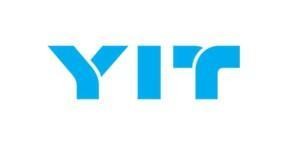YIT
When the construction companies YIT and Lemminkäinen merged in 2018, the new company started to look for new common tools and working methods. In the process of harmonising production and working methods, the reporting requirements of the sites were highlighted as an important area. The project, carried out in cooperation with Sulava, brought together the tools and methods of reporting and created a platform that scales to future requirements.


Quick Facts
- YIT’s 7,400 professionals previously felt reporting was challenging and time-consuming.
- It was decided to address reporting challenges with modern tools, i.e. using Microsoft Power Platform.
- The aim was to combine and facilitate the reporting processes – and also to reduce the time of reporting at several group levels in different segments.
YIT is the largest Finnish and a significant Northern European urban developer and construction company. The company’s 7,400 professionals operate in 10 countries and its net sales amounted to 3.07 billion euros in 2020.
In the past, YIT used to have a number of reporting services and tools, and there was no comprehensive, coherent approach to collecting and reporting data received through these. Reporting was often felt to be awkward and time-consuming at work sites.
A decision was made to resolve this challenge using modern tools and the Microsoft Power Platform was selected as the platform. In addition to consolidation, the goal was to retire several Group-level reporting services in different segments.
“The connecting factor in each of our areas is that regular, project-specific reporting is being done throughout, which is also often regulated, i.e. mandatory” comments Siru Rinne, Head of Site Management Development of YIT.
“Because reporting has caused problems for many field engineers, among others, and the reporting obligation has to be addressed in any case, we wanted to build a system that was as hassle-free as possible. Initial feedback has been good and encouraging.”
From pre-surveying to commissioning modules into use
The project was started with a pre-survey and a comprehensive needs survey aimed at providing a broader picture of different reporting processes in the different business areas. At the same time, technical requirements for the initial selection of the platform solution were identified. The development progressed as a process from the first version to the continuous development phase through its expansion.
During the project’s pre-survey phase, it was understood that ̈implementing the change in the business areas would take time and therefore the solution should be based on a model where the rest of the foundation work can be made in a business-driven manner, by listening and responding to the feedback provided by the end users.
The first modules were the construction of waste and environmental reporting, which is a highly regulated area nowadays. In January 2021, project management status reporting was introduced and in April a module was presented to the YIT work sites to report COVID-19 exposures. One of the most important modules is the monthly status report from the work sites, where you can see clearly in practice how things are on the site.
“One of the most important aspects of the implementation of modules is the training that had to be done mainly through Teams due to the coronavirus pandemic. In the training, the process owner reviewed the technical aspects of the implementation and answered a number of questions”, Rinne explains.
Power Platform enterprise-level solution
One of the key objectives of the project was to build a scalable reporting platform and the modular and flexible Microsoft Power Platform was ideally suited for this purpose. The platform enables the rapid and easy deployment of new tools that suit YIT. Because the aim was not to solve just a single problem.
“Under no circumstances did we want to be coding a customized solution for YIT from nothing. The Power Platform offers certain framework conditions for functionality, but still provides a very flexible and excellent basis for further development. The solution also fits nicely into YIT’s overall architecture”, Rinne says.
“Thanks to the Power Platform and Sulava, we have been able to make quick solutions and deployments. For example, discussions about the module related to coronavirus exposure was started in the beginning of January, and already in April it was in use.”
The field feedback has also been good. The applications have been found to be clear and easy to use, and have been said to excellently achieve the objectives.
Sulava as a team mate
YIT and Sulava already have a long history of cooperation and this project was carried out working closely together. According to Rinne, the team worked together so well that it did not feel like an external consultant was involved.
“All the involved team members from YIT have been very satisfied with Sulava’s professionality as well as with their flexible and client-centric cooperation. Sulava’s consultant listened carefully to our needs and always looked for the best possible solutions”, Rinne comments.
In closing, Siru Rinne wants to share a few lessons and tips for those planning similar projects:
- Success requires an open and direct connection witḧ business
- Involve end users in all stages – listen and ask
- Use time to conduct a needs analysis and to plan development
- Start small̈ and stage the commissioning of features
- Book enough time for making the foundations and be ready to be flexible if necessary
Author: Juhani Lassila.
Published in April 2021.